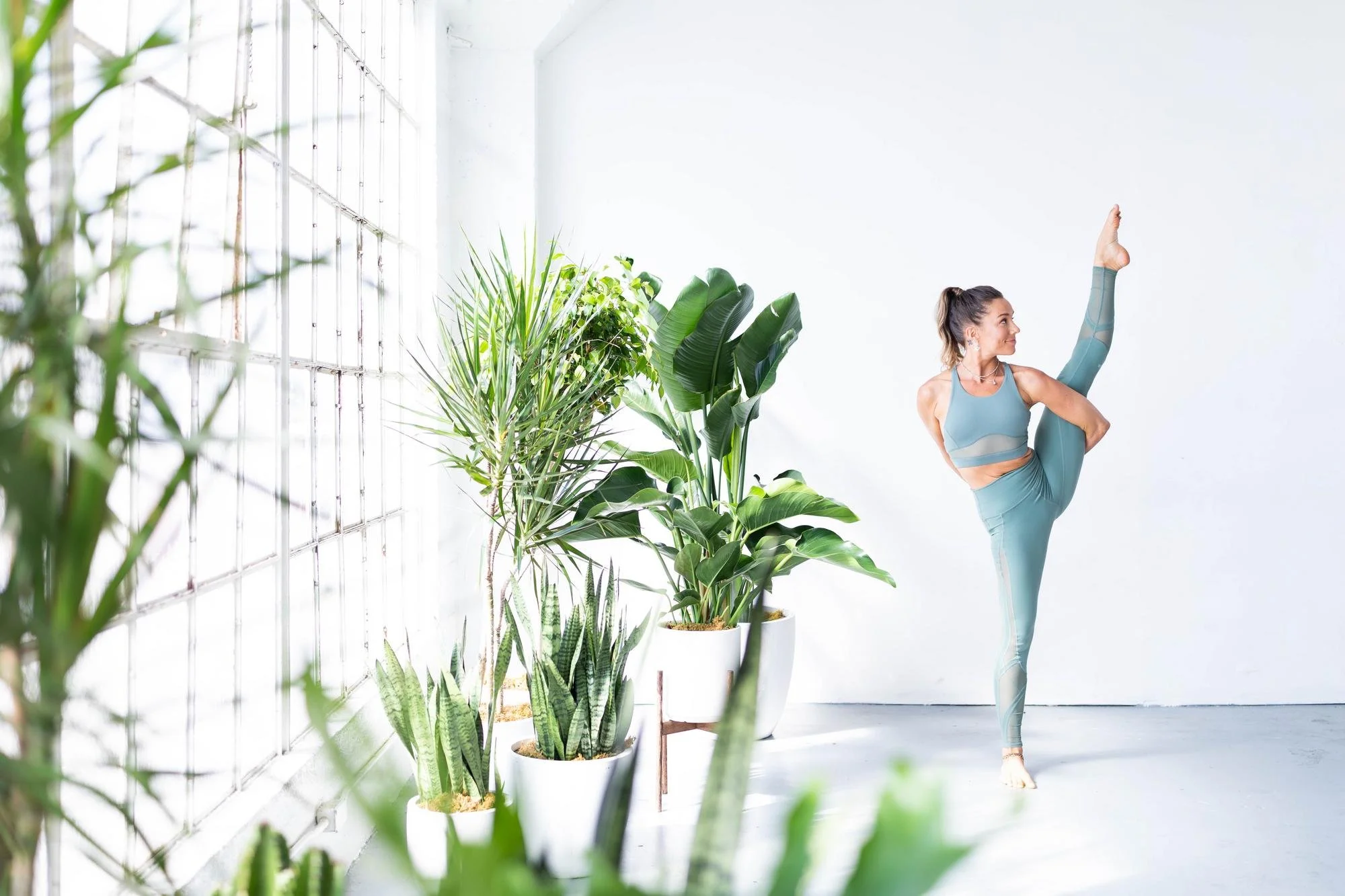Pose Breakdown: Bird of Paradise
Spread those gorgeous wings! Bird of Paradise (Svarga Dvidasana) is an intermediate one-leg balance that can add a fun challenge to your Warrior series — or anywhere else in your flow. This pose challenges your flexibility, balance, and focus alike, and can be a great hip opener if you spend a lot of time sitting.
Bird of Paradise works well as a peak pose, especially when you’ve been building up over a few rounds. Think of it like a reverse Half Moon, and try popping up after a Bound Extended Side Angle Pose or Bound Warrior.
Make sure you’re comfortable balancing on one leg, and take things slow once your foot’s off the ground — there’s no need to get your leg straight the first time!
Benefits of Bird of Paradise Pose
Strengthens your lower body
Opens your hips and groin
Improves concentration
Calms your mind
Contraindications
Avoid this pose or talk with your doctor first if you have any pelvic issues or injuries to your shoulders, arms, hips, or hamstrings.
Warm-Up Poses for Bird of Paradise Pose
Half Splits
Extended Side Angle
Triangle
One-Legged Tadasana
Warrior III
How to Do Standing Splits Pose
1.
Begin in a forward fold with your feet a bit wider than your hips.
2.
Come onto the ball of one foot, placing your shoulder toward your inner knee.
3.
Take your same side hand behind your calf and press your knee forward to tuck your shoulder behind your knee.
4.
From here, wrap your hands behind your back and bind your hands together.
5.
Bend your standing leg and begin to stand up balancing on that standing leg. Once you come to that standing position, find a focal point out in front of you.
6.
Straighten your standing leg and open your shoulders. Point the toes of your lifted leg and try to straighten your lifted leg to complete this pose.
Follow Up Poses for Bird of Paradise Pose
Standing Forward Fold
Half Lord of the Fishes
Wild Thing
Bound Angle
Supine Twist
Child’s Pose
Bird of Paradise Pose With Props
There are many reasons why it could be hard to bind your arms firmly around your knee. Some may only have trouble their first few times doing the pose, but it can be especially challenging for those of us with short arms, thick thighs, or long torsos.
The good news is that it’s really easy to add a strap (or even a bandana or sweat towel) to create a sturdy bind. When you’re about to join your hands, take the strap in one hand. Then, instead of clasping your hands together, grab part of the strap with your other hand. Shorten the amount of strap between both your hands until they feel secure around your leg, then proceed with the rest of the pose.
What Does Svarga Dvidasana Mean?
Not only does the pose call to mind the beautiful flower of the Bird of Paradise plant, it’s not too far from the Sanskrit translation. “Svarga” means “heaven” or “paradise.” Dvija or Dvida primarily means “twice born,” referring to a Vedic second spiritual birth, but it can also refer to a bird, which is born first in an egg.
Check out a more in-depth breakdown of Bird of Paradise Pose on Alo Moves, available for free with a 14-day trial.








